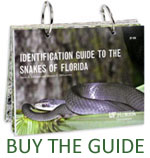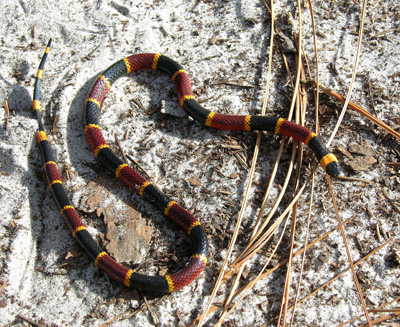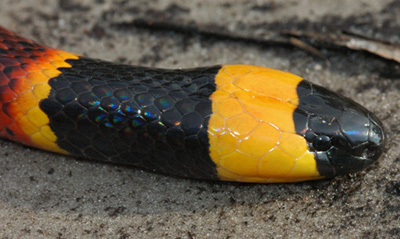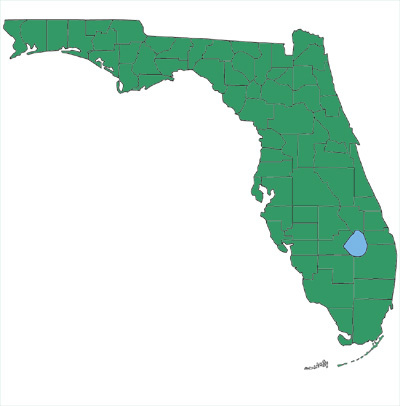Florida's Snakes

Coralsnake
(Micrurus fulvius)VENOMOUS
Venomous snakebites are rare and can usually be avoided; however, knowing how to respond correctly to venomous snakebites is also important. Learn more...

Banded
Coralsnake


Photos by Dr. Steve A. Johnson (UF, upper photo) and Kenney Krysko (FLMNH, lower photo). These photos may not be used without the express written permission of the photographer.
Size:
Usually 2–3 ft. (max. ~4 ft.)
Identification:
Body is marked with wide bands that completely encircle the body. Red and black bands are separated by slightly narrower yellow bands; red bands often have black speckles. Think of the colors of a stoplight – if you see yellow bands touching red bands, stop! Snout is rounded and black, and a wide yellow band runs across the back of the head. Tail is ringed with black and yellow. Scales are smooth. It may be confused with the harmless Scarlet Kingsnake or Scarletsnake. This is the only venomous snake in Florida that lays eggs.
Habitats:
Found throughout Florida, mostly in dry habitats, including hardwood hammocks, pinewoods, swamp edges, and suburban neighborhoods. It spends most of its time buried under loose leaf litter or logs or underground in stump holes or small burrows.
Diet:
Snakes, lizards, wormlizards
Map by Monica E. McGarrity - may be used freely for education.
